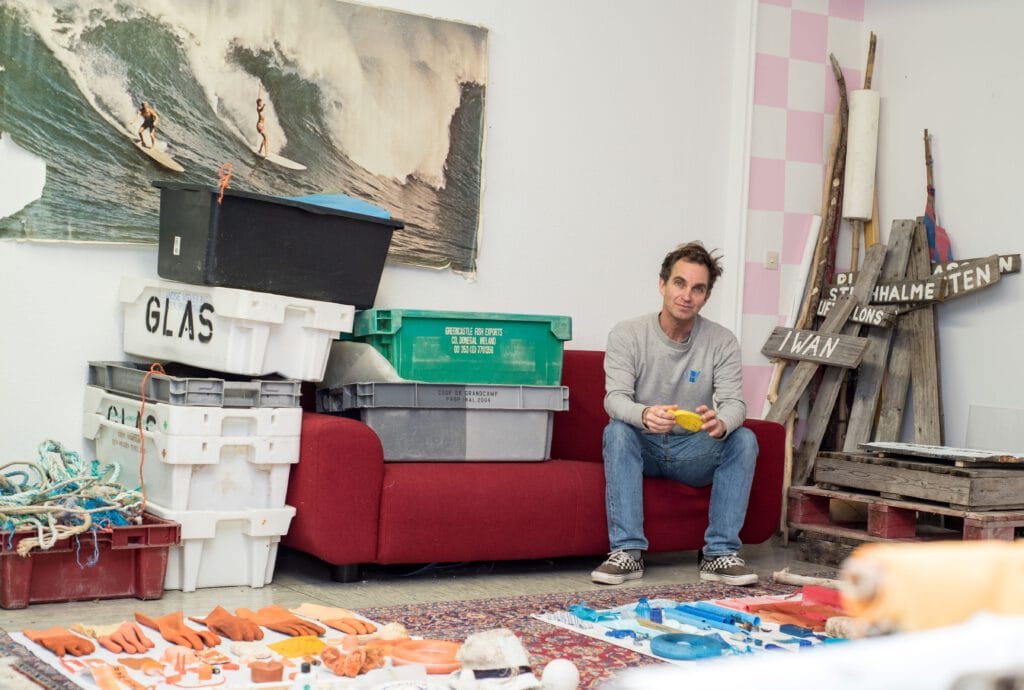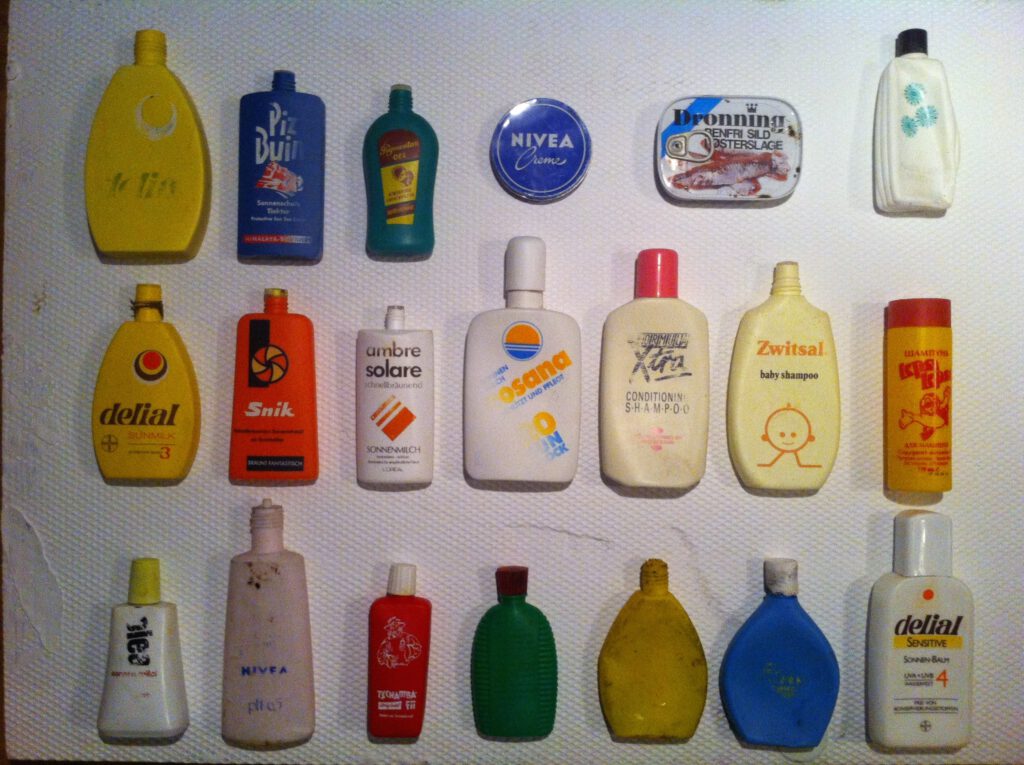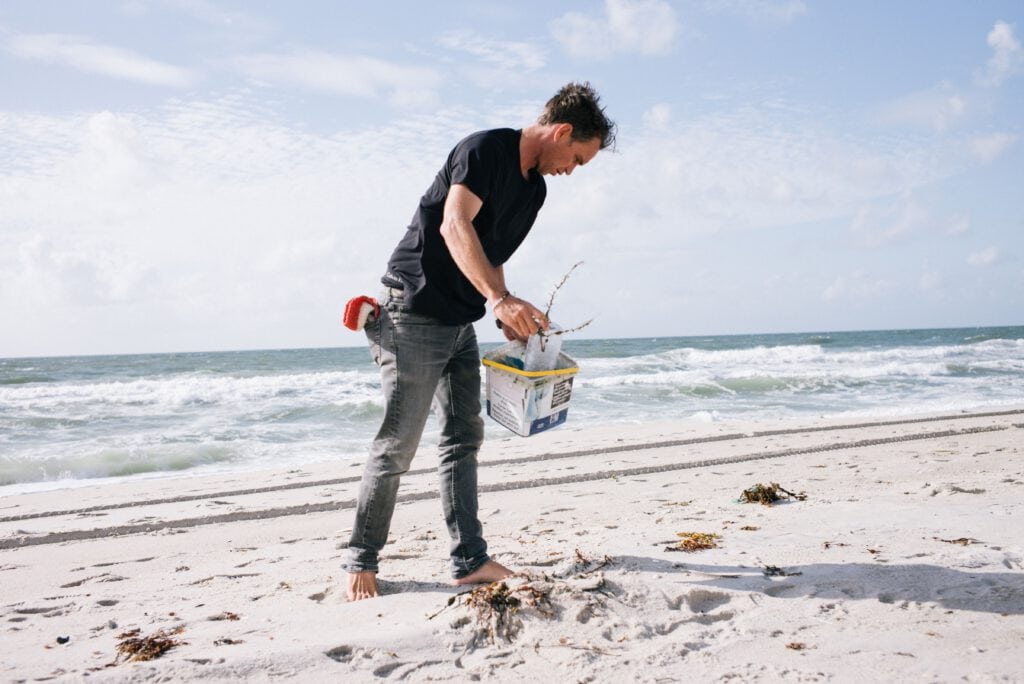Angelo Schmitt from Sylt makes very special works of art out of plastic rubbish he finds on the beach.
In the rooms of the Inselkind surf school in Hörnum, works of art can be seen – created with rubbish from the sea. Figures, for example, made from what the sea threw onto the beach: from buoys, balls and brushes for haircuts. Mobiles, i.e. free-swinging and balanced structures, made of rubbish, a set box full of ropes, yarns and twines, some artfully knotted. A collection, a small gallery of the strange.
Angelo Schmitt was a lifeguard and started picking up rubbish when he was on the beach many years ago. He sorted out what was not of natural origin and realised: waste can be aesthetic. He saw shape, he saw colour. In his hands, the rubbish became art – to bring it into people’s consciousness. The passionate surfer and surf instructor still creates pieces of art from what he finds on the beach. They arise spontaneously. “I collect and clear the beach of rubbish and then look twice – to see if they are pupils, funny noses or possibly even a head.”

He wants to draw attention, create awareness. So that the problem of litter at the sea is not only present to people on International Coastal Clean up Day, which traditionally takes place in September. He also does his own coastal cleaning: “I have been organising a beach clean up once a year for 18 years, every year in March, from List to Hörnum,” Angelo Schmitt reports.
Relics of a carefree Sylt beach holiday
He collects the rubbish for his works of art not only on Sylt’s beach, but all over the world. “For example, on Iceland or off Cape Town, in Nice or Denmark,” he explains, because rubbish is a global problem. “On Sylt, I find the most during storms and winds from the southwest or after. Especially on the southern tip of the island, between Zanzibar and the Odde.”
On Instagram (@shades-of-trash) he presents some of his figures and works as art objects that also serve as memorials. For example, he already showed them to a wide audience at the Windsurf World Cup in Westerland. Or, by prior arrangement, you can drop by his surf school in Hörnum. There are beer cans from Scandinavia on the shelf and those that once contained tea from Asia. Next to them are Seven Oceans drinking water bags and the label of once frozen fishing lures from Florida. “100% natural” is written on the plastic label, which shows a mermaid on a fishing hook.

Plastic lasts forever. Some time ago he found bottles in the dunes of Sylt, a storm tide had eaten away at them, that once contained suntan lotion. “It was a strange experience when I found them – quite an old-fashioned design and label, I knew it from back then, quite well-known brands. I guess they were from the 1960s or 70s.” Relics of a carefree Sylt beach holiday almost half a century ago – and the rubbish is still there today. Long forgotten, certainly, but never gone.
Most people start thinking, he says, when they see the bizarre hodgepodge, its witty art. They are quite receptive to the subject, he says, because you don’t just have to hear and see it, you also have to be able to touch it in order to understand it in the true sense of the word. “That’s already achieved a lot,” says Angelo Schmitt and continues to collect.


iThere are no comments
Add yours